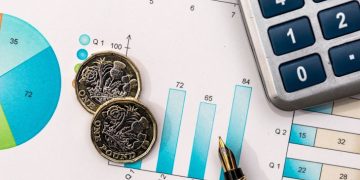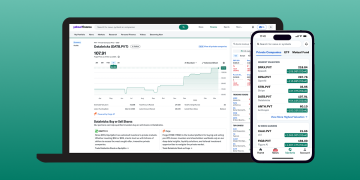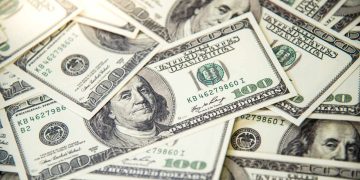New foreign reserves data released. On July 7, the State Administration of Foreign Exchange (hereinafter referred to as “SAFE”) released data on the size of foreign exchange reserves at the end of June 2024. Statistics show that as of the end of June 2024, the scale of China’s foreign exchange reserves was 3,222.4 billion US dollars, down 9.7 billion US dollars, or 0.30%, from the end of May.
In terms of gold reserves, the People’s Bank of China’s “official reserve assets” data shows that as of the end of June 2024, China’s gold reserves reported 72.8 million ounces, unchanged from the previous month. In the view of analysts, the market’s interest rate cut expectation of the Federal Reserve is an important factor affecting the trend of the US dollar index and global financial asset prices, China’s economic operation continues to pick up and provide support for the foreign exchange reserve scale to continue to maintain basic stability, and the general direction and long-term trend of the People’s Bank of China to continue to increase gold holdings has not changed.
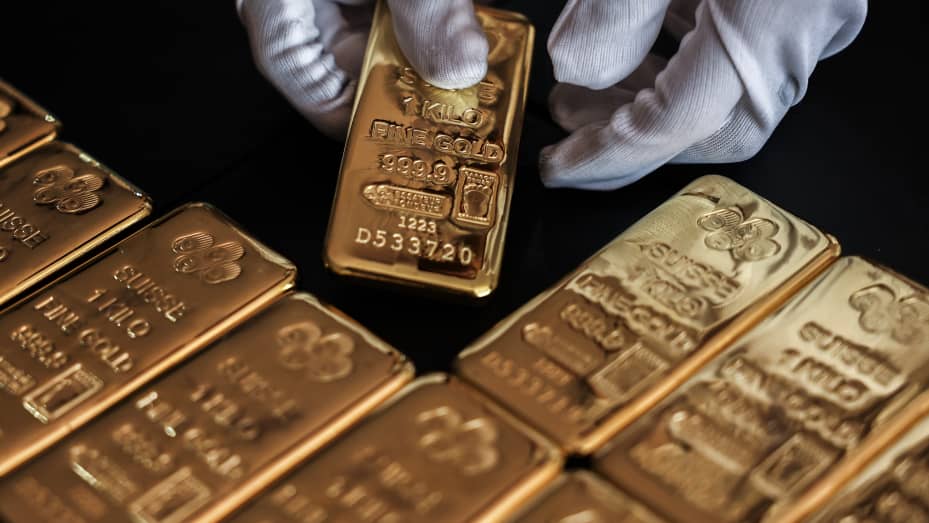
Foreign reserves fell slightly in June from the previous month
Foreign exchange reserves have stood at $3.2 trillion for seven consecutive months. According to the State Administration of Foreign Exchange (SAFE), as of the end of June 2024, China’s foreign exchange reserves amounted to US $322.24 billion, down US $9.7 billion, or 0.30%, from the end of May.
Beijing Business Daily reporter further comparison found that since December 2023, the scale of China’s foreign exchange reserves has continuously remained above the $3200 billion mark. Among them, the scale of foreign exchange reserves in March 2024 reached $324.57 billion, the highest level in the year. By the end of June 2024, the scale of China’s foreign exchange reserves has decreased by 15.6 billion US dollars from the end of 2023.
For the changes in foreign reserve data this month, SAFE pointed out that in June 2024, affected by the monetary policies and expectations of major economies, macroeconomic data and other factors, the US dollar index rose, and global financial asset prices rose overall. Under the combined effect of exchange rate translation and asset price changes, the scale of foreign exchange reserves declined in the month.
“In June 2024, the US economic data was mixed, the market expected the Federal Reserve to start cutting interest rates in September, combined with the European Central Bank to cut interest rates ahead of the Federal Reserve, driving the US dollar index higher, and the overall global financial asset prices rose.” Wen Bin, chief economist at Minsheng Bank.
Specific to the performance of the financial market in June, the exchange rate, the US dollar index rose 1.1% month on month, the main non-US dollar currencies have fallen, the yen, the euro, the pound against the US dollar exchange rate depreciated 2.2%, 1.2%, 0.8%. In bond prices, the dollar-denominated hedged global bond index rose 0.9%. The 10-year European bond yield fell 25 basis points to 2.49%; The 10-year JGB yield edged down 2 basis points from the previous month to 1.06 percent. In terms of stock prices, the S&P 500 rose 3.5%, the Euro Stoxx 50 index was flat month-on-month, and the Nikkei 225 index rose 2.9%.
Zhou Maohua, a macro researcher at the financial markets department of Everbright Bank, pointed out that the change in foreign exchange reserve assets in June was mainly affected by valuation changes. In June, the influential factors were different, the US dollar rose while the prices of major global financial assets rose, but the overall volatility narrowed, and the scale of China’s foreign reserves also maintained low changes.
Gold reserves remain unchanged
In terms of gold reserves, according to the People’s Bank of China’s “official reserve assets” data, as of the end of June 2024, China’s gold reserves reported 72.8 million ounces, unchanged from the previous month. This is also the third consecutive month since April 2024 that China’s gold reserves have maintained this level.
Since November 2022, the People’s Bank of China has continuously increased its gold reserves until May 2024, ending the past “eighteen consecutive increases.” In this round of increased holdings, China’s gold reserves increased by 10.16 million ounces.
Pang Ming, chief economist of Jones Lang Lasalle Greater China, believes that in the past period of time, gold prices have continued to fluctuate at a high level, and the probability of price fluctuations and adjustments in the short term is still not low. In this context, for the second consecutive month, the People’s Bank of China suspended the use of bargain allocation as the main means of operation to increase gold holdings, reflecting that the People’s Bank of China has sought a balance between adjusting and optimizing the structure of international reserve portfolio, ensuring the preservation and appreciation of reserve assets and returns, and reducing portfolio risk and volatility. To coordinate and maintain the unity of international reserve strategy, profitability, liquidity and security.
Zhou Maohua said that the People’s Bank of China’s increase in gold holdings is mainly to optimize the structure of official reserve assets, promote the diversification of official reserve assets, enhance the ability to withstand global financial market fluctuations, and enhance the stability of official reserve assets. From the perspective of the trend, the credit of the US dollar has declined, the global financial market has fluctuated sharply, and the diversification trend of foreign exchange reserve assets of various countries has accelerated, so as to reduce the excessive dependence on a single currency and assets, reduce the impact of overseas policies, and enhance the stability and liquidity of total official reserve assets.
Since March 2024, affected by many factors such as geopolitical conflicts, monetary policy changes in major economies and interest rate cuts by the Federal Reserve, the continuous rise in precious metal trading prices has triggered hot discussions, and gold has repeatedly refreshed its highest trading price in history. According to Wind data, COMEX gold peaked at $2,454.2 per ounce in May 2024. As of the close of July 5, COMEX gold was at $2,399.8 / ounce, up 1.46% on the day.
However, Pang Ming also mentioned that considering the advantages of gold in risk aversion, anti-inflation, long-term preservation and appreciation, China’s People’s Bank in the international reserve portfolio allocation and dynamic adjustment of gold reserves, diversification and rebalancing of international reserve assets policy motivation has not changed, continued to increase the direction of gold and long-term trend has not changed.
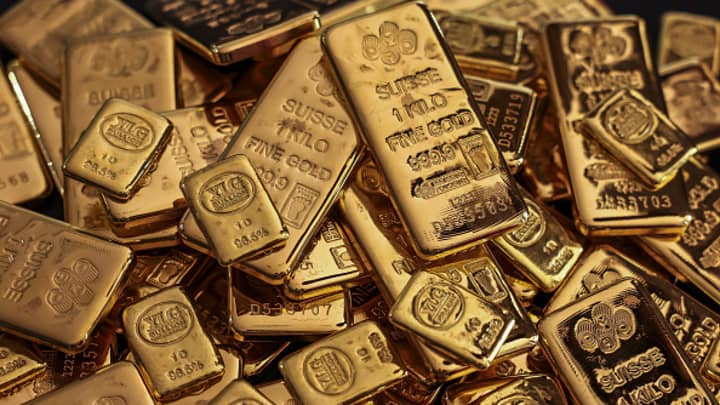
Foreign reserves are expected to remain high
For the management of China’s foreign exchange reserves, in June 2024, Zhu Hexin, deputy governor of the People’s Bank of China and director of the State Administration of Foreign Exchange, said in a signed article that it is necessary to further improve the operation and management of foreign exchange reserves, prudently promote diversified and decentralized allocation, improve the risk management system covering the whole process, and actively expand diversified use. We will make every effort to ensure the safety, flow, preservation and appreciation of foreign exchange reserve assets, and better play the role of “stabilizer” and “ballast stone” in safeguarding national economic and financial security.
For the next stage of the scale of China’s foreign exchange reserves, the State Administration of Foreign Exchange mentioned that China’s economic operation continued to pick up to a good trend, high-quality development and solid progress, providing support for the scale of foreign exchange reserves to continue to maintain basic stability.
In Wen Bin’s view, the current international economy has maintained a moderate recovery, the global manufacturing PMI has been above the line of growth and contraction for six consecutive months, and international trade has continued to pick up. China’s commodity export structure continues to upgrade, the foreign trade “circle of friends” further expanded, high-level opening up in an orderly manner, exports are expected to maintain a medium-high growth rate, and continue to play a basic role in stabilizing cross-border capital flows. The steady improvement of China’s economic situation and solid progress in high-quality development will help maintain the overall balance of China’s international payments and lay a solid foundation for the basic stability of the scale of foreign exchange reserves.
Zhou Maohua pointed out that from the trend point of view, the uncertainty of overseas economic and policy prospects is high, the valuation of overseas assets is at a historical high, and the price fluctuations of financial assets continue to disturb the valuation of China’s foreign exchange reserve assets, but there are relatively many favorable factors, and China’s foreign exchange reserves are expected to continue to stabilize at a high of more than 3 trillion US dollars.
“Mainly, China’s economy shows a good recovery trend, foreign trade remains resilient, China, as one of the most dynamic super-large economies, attracts the global long-term capital trend inflows, and the balance of payments remains basically balanced.” At the same time, developed economies are gradually transitioning to a rate cut cycle, restricting the upside of the dollar, and the impact of the dollar on asset valuations is expected to weaken.” Mr Zhou added.
In terms of gold reserves, Zhou Maohua believes that the current gold price itself is not low and is at a historical high, but there is still room for global central banks to buy gold, but there is uncertainty in the pace of buying gold. It is a trend for central banks to diversify official reserve assets, reserve gold and optimize the reserve structure of official assets are long-term strategic considerations, and the rhythm of gold reserve will remain flexible in the short term.








